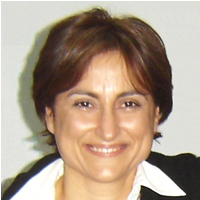Adrenal insufficiency in Bilateral Adrenal Metastasis implemented SBRT
Published on: 14th February, 2018
OCLC Number/Unique Identifier: 7347067597
Today, there is a considerable increase in localizing adrenal bulks with the bringing radiologic diagnosis methods having high technology into use and improvement in diagnostic tests. Adrenal glands are vital tissues for the organism due to the hormones they secrete. Death is a natural result in the absence of adrenal cortex. Adrenal bulks can be seen with different clinical, laboratory and radiological data. These bulks are often benign and rarely malign. They can be functional or non-functional. Major treatment methods used fort he treatment of adrenal gland primary tumors or metastases are surgery, arterial embolisation, chemical ablation, radiofrequency ablation and radiotherapy [1-4].
Adrenal glands are one of the metastatic fields. In wide autopsy series, adrenal metastasis has been determined between the rates of 13-17% [5]. While unilateral metastasis is common, bilateral metastasis’ rate of incidence is between 4-20%. It has been stated that lung (35%), gastric (14%), esophageal (12%) and hepatobiliary (10%) primary carcinomas adrenal metastasis are prevalent most frequently [2]. Curative treatments are tested on patients having cancer with oligo metastasis limited with adrenal gland and primary source is under control because of the expectation of long-term survival, and the surgery is the first choice. These bulks can be treated with open and laparoscopic surrenalectomy in a curative way. It was reported in studies that overall survival was longer in resection of clinically isolated adrenal metastases when compared with nonsurgical therapy (including RFA, external beam radiotherapy, arterial embolization, radioembolization, chemical ablation, and cryoablation) [1,2,5,7]. Lo et al., found one-year survival as 73% and two-year survival as 40% in their study conducted on 52 patients having curative resection for solitary adrenal metastasis [3]. Tanvetyanon et al., demonstrated 5-year survival rates of 25% following resection of isolated synchronous adrenal metastases and reported 26% after resection of metachronous adrenal metastases in their study conducted on NSCLC patients developing solitary adrenal metastasis [4]. Conducted studies revealed that the rate of complication was 9-20% in patients having adrenalectomy for solitary adrenal metastasis [2-4,7].
In recent years, the use of radiotherapy, which is a treatment modality as effective as surgical resection, has become prevalent for the management of oligometastases. Today, three different modalities have been tested in the radiotherapy treatment of adrenal gland metastases. In the first one, total 50 Gy treatment dose with 3D-CRT as daily 2 Gy fraction dose is given [8]. The second one is IMRT implementations for adrenal gland metastases but it isn’t thought as suitable according to Practice Guidelines for Neuroendocrine Tumors published by NCCN in 2010. The third radiotherapy modality is stereotactic body radiotherapy (SBRT). SBRT implementations have started to be preferred today since they are completed in a few fractions in addition to that they show close results to surgery for primary tumors and metastases. Holy et al., implemented SBRT to patients having 13 solitary adrenal metastases with NSCLC at 5 fractions and between 20 and 40 Gy total doses. They found disease-free survival as median 12 months, overall survival as median 23 months and local control rate as 77% [9]. In SBRT implementations for different cancer types determined 30 adrenal metastases, Chawla et al., reported the rates of one-year survival, local control and distant metastasis as 44%, 55% and 13% respectively [10]. In Casamassima et al.,’s study on this issue, the rate of two-year local control was found as 90% [11]. Second degree toxicity was seen in none of the above mentioned studies according to the RTOG toxicity classification. Wardak et al., reported that the patient having lung cancer that they implemented SBRT for bilateral adrenal metastases developed adrenal insufficiency depending on SBRT [6]. Ippolito et al., Reported that adrenal insuffiency may be due to both the tumor and the local treatment [12]. Incidence of symptomatic adrenal insufficiency were reported 4% [2,13]. Casamassima et al and Onishi et al studies, two grade 2 adrenal insuffiencies were reported [11,14].
Consequently, when all these data were evaluated, it is seen that SBRT use has gradually become prevalent for patients not suitable for surgery because of comorbid disease, for patients having oligometastatic cancer that are not suitable for surgery since it has vital risk to resect or that refuse surgery. However, it hasn’t been clear yet that local control will be provided with how many total doses and which fraction schema. There is no agreement on the examination of the adrenal hormone axes because of the short length of life. Besides, it should be kept in mind that adrenal insufficiency can develop in patients implemented SBRT because of bilateral adrenal metastasis developing as synchronous or metachronous. The hormone levels of these patients need to be followed. More researches should be done to lighten this matter.
Laparoscopic Adrenalectomy; A Short Summary with Review of Literature
Published on: 2nd January, 2017
OCLC Number/Unique Identifier: 7317591221
We present a review article on adrenal glands, with a special reference to their anatomy, physiology, evaluation, laparoscopic operative techniques with a short summary of review of literature.
Usefulness of salivary cortisol as a marker of secondary adrenal insufficiency in paediatric patients
Published on: 7th April, 2021
OCLC Number/Unique Identifier: 9026719998
Background: The main cause of adrenal insufficiency (AI) in paediatric patients is prolonged treatment with corticosteroids. Determination of plasma cortisol (PC) during ACTH test is the most used adrenal function indicator in clinical practice. However, determination of salivary cortisol (SC), a simple test especially useful in children in order to avoid invasive procedures, can be used as an alternative technique for the diagnosis of adrenal disease.
Methods: A two-year prospective study (January 2014-January 2016) in paediatric patients (2-18 years of age) treated with corticosteroids for more than fifteen days, who were investigated for suspected AI. Low-dose ACTH test was used to determine adrenal function and samples for SC and PC were obtained simultaneously in basal situation and during the test (at 30, 60 and 90 minutes).
Results: 230 samples (118 PC-112 SC) of 30 studies belonging to 20 patients (4 males), mean age 10.93 years ± 3.69 SD. Pearson’s correlation coefficient showed a positive correlation between PC and SC (r = 0.618, p < 0.001). All the studies with some determination of PC higher than 18 μg/dL (n = 8) had a SC peak higher than 0.61 μg/dL with a specificity of 66.67% and a sensitivity of 93.94% (ROC analysis).
Conclusion: Measurement of SC is a less invasive, easier and quicker test than PC to measure plasma free cortisol levels. In our study, a SC peak in low-dose ACTH test higher than 0.61 μg/dL was able to discriminate patients without AI, and proved to be a useful tool in the initial evaluation of children with suspected AI.Introduction
The activation of the hypothalamic-pituitary-adrenal axis in response to critical illness and the resulting release of cortisol from the adrenal cortex are essential to stress adaptation. Adrenal insufficiency (AI) is described as the inability of adrenal glands to produce an appropriate hormonal secretion not only under stress but also in basal situation. Therefore, a low baseline plasma cortisol (PC) (< 5 μg/dL) and a poor cortisol response to stimulation with exogenous adrenocorticotropic hormone (peak < 18 μg/dL) are some of the defining criteria of this condition [1,2]. It is well known that the main cause of AI in paediatric patients is prolonged treatment with exogenous corticosteroids, which is an iatrogenic cause derived from the increasing complexity of paediatric pathologies and the increased use of prolonged high-dose corticosteroid therapy.
In clinical practice, adrenal function is usually assessed by the total PC (determined by low-dose ACTH test). This implies the placement of a vascular access which is often a traumatic experience for children.
PC includes protein-bound fraction and serum-free cortisol. The latter constitutes the biologically active form of the hormone and is responsible for glucocorticoid activity on peripheral organs. Most of the circulating cortisol is bound to plasma proteins (over 90%), such as cortisol-binding globulin (CBG) and albumin, whereas only about 10% of circulating cortisol is free. Hence, the measurement of plasma-free cortisol level has been considered more representative of adrenal function (especially in critically ill adults and children) [1,2], because some conditions, such as hypoalbuminaemia or hypoproteinaemia (frequent in critically ill patients or in patients with cirrhosis), may lead to misinterpretation of adrenal function with an overestimation of the prevalence of AI. But the direct measurement of free PC is a laboratory-dependent and time-consuming procedure that is not available for routine use. Salivary cortisol (SC) is one of the several indirect methods available to determine free PC [3], as SC levels accurately reflect free PC [4] even in cases of hypoalbuminaemia or CBG abnormality [1,5]. For this reason, in the last years, this technique (SC) has been introduced as a non-invasive tool in the diagnosis of adrenal cortical disorders, for its simplicity and applicability in the paediatric population. However, few studies to date have evaluated the usefulness of SC as a diagnostic method in children with AI. No interactions between exogenous corticoids and SC have been described [6].
The aim of the present study was to assess the usefulness of determining salivary cortisol levels as a diagnostic tool in children with suspected secondary iatrogenic AI.
The Cortisol Connection: Weight Gain and Stress Hormones
Published on: 28th March, 2024
Weight gain can be good or bad for health. Benefits include increased health for overweight people, disease or surgical recovery, and more. Health concerns, joint and musculoskeletal disorders, respiratory issues, metabolic abnormalities, cardiovascular health, psychological impact, reduced mobility, digestive troubles, hormonal changes, and cancer risk are negative impacts. Weight gain outcomes depend on heredity, weight distribution, and health. Maintaining a healthy weight needs a balanced diet, regular exercise, and stress management. A doctor or nutritionist can offer personalized weight management advice. Stress chemicals like cortisol trigger weight gain. ACTH stimulates adrenal glands to release cortisol, which increases hunger, fat storage, insulin resistance, and muscle loss. Understanding how stress hormones like cortisol affect weight gain is vital to reducing chronic stress’s health risks. Stress reduction, a balanced diet, regular exercise, proper sleep, social support, and professional treatment can mitigate these outcomes. Ultimately, stress hormones like cortisol can cause weight gain, but a holistic strategy tackling physical and psychological stress can help people maintain a healthy weight.




